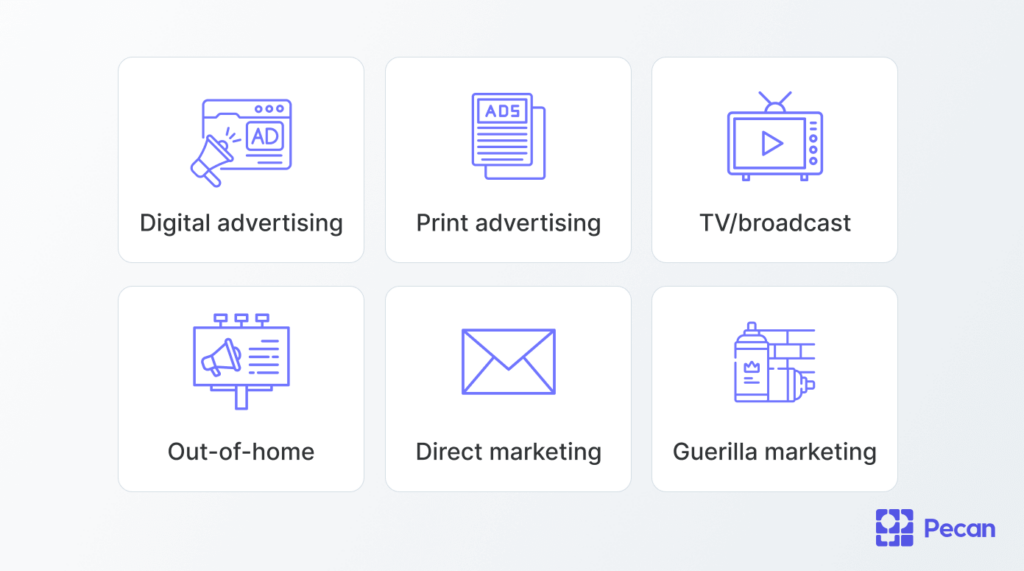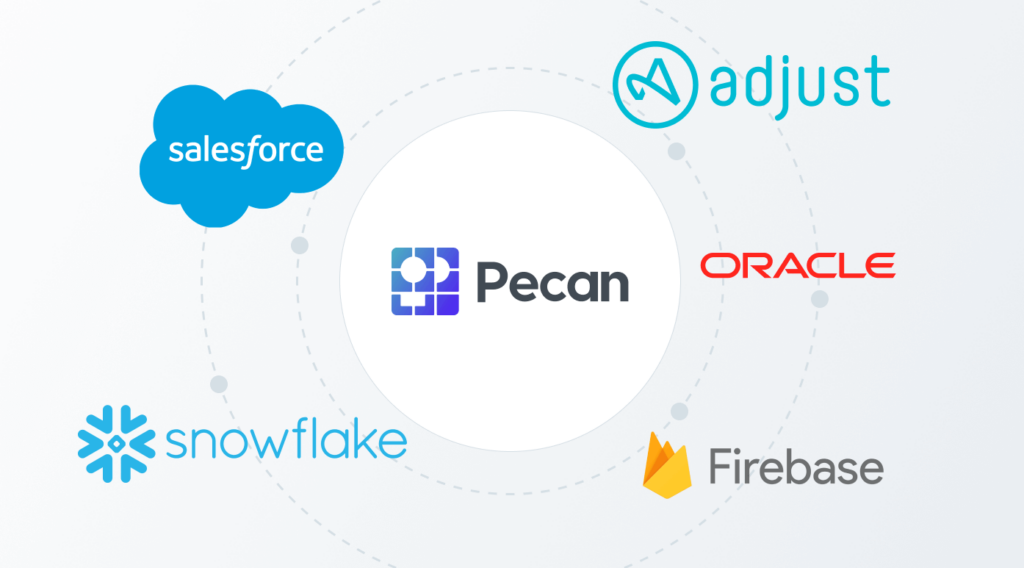In a nutshell:
- Marketing mix modeling helps businesses make smarter decisions about their marketing budget and forecast sales.
- It analyzes the effectiveness of different marketing channels and helps allocate resources accordingly.
- By using marketing mix modeling, businesses can maximize their sales, reach more customers, and strategically invest their resources.
- Base sales and incremental sales are two types of sales that marketing mix modeling focuses on.
- To perform marketing mix modeling, businesses need to find a trusted partner, collect and connect data sources, define their business problem, and review the data to inform their marketing strategy.
Sometimes, marketing can feel like playing darts in the dark.
No matter how skilled you are, knowing the right strategy to hit the bullseye can be tough.
Marketers utilize tactics ranging from paid social, out-of-home, video, social media, and more. But which is the most impactful? What channel is most effectively driving sales?
They won’t know how much to allocate to a campaign if they can't answer this.
That’s where marketing mix modeling comes into play.
Organizations use marketing mix modeling to make smarter decisions about their marketing budget and forecast realistic sales numbers. MMM's revitalization with AI has brought about a renaissance for this tried and true method, with experts in the Harvard Business Review calling it the "new gold standard for digital ad measurement."
In this article, we’ll cover the benefits of marketing mix modeling and how you can use it to guide and inform your marketing strategy.
Before diving in, let’s define marketing mix modeling to ensure everyone is on the same page.
Photo by Igor Omilaev on Unsplash
What is marketing mix modeling?
Marketing mix modeling is a data-driven process businesses use to determine the effectiveness of their spend in various marketing channels.
A valuable marketing mix model can establish projections for key performance indicators (KPI) like reach, clicks, or conversions.
For many marketers, knowing exactly where to invest your time, money, and resources in your marketing plan can be difficult.
There are dozens of channels — each with the potential to be effective. However, you could be wasting time and money if you don’t have a good method of analyzing and forecasting performance.
Marketing mix modeling enables marketers to make smarter choices on where to shift their focus and budget by anticipating how an increased budget for a channel will affect results.
Think of it as a statistical analysis that reviews all dependent, independent, and external factors in your marketing efforts. Then, it uses that data to evaluate your marketing performance and overall impact on sales.
This process enables businesses to create smarter marketing plans and spend money on the channels driving sales while eliminating other ones that aren’t impacting the bottom line.
The right model will help you supercharge your marketing investment and understand more about the impact of marketing activities on business performance.
Additionally, some marketing attribution systems and conversion events might provide information for analysis, but they only provide the marketer with piles of data rather than insights.
The right marketing mix modeling process can take that data and make it actionable by educating the marketer on what is working and what they should focus on.
In addition, marketers can run experiments to see what might happen.
For example, you could model that if X amount of dollars were added to spending on Meta, you might expect X conversions tomorrow based on the data you have today.
If this process is so useful, why isn’t every business doing it from the start?
Let’s look at some of the most compelling reasons marketing teams are turning to marketing mix modeling to supercharge their efforts and achieve their objectives.
Photo by Igor Omilaev on Unsplash
Why do businesses use marketing mix modeling?
Marketing teams are busy and often overworked. Should marketing mix modeling be added to their already overflowing plates?
Yes, businesses should use marketing mix modeling for a variety of reasons.
Some of the most popular reasons why marketing mix modeling is essential include:
- Effectiveness: Marketers can quickly digest the most effective channels and campaigns across their marketing mix.
- Stretching Dollars: The insights from marketing mix models enable marketers to understand how much money they should invest in specific channels.
- Reach: You can reach more customers more effectively for less money with the right marketing mix model in play.
- Strategic Investment: You can properly invest your company resources, including employees, time, and focus, in the right channels.
- Maximizing Sales: With marketing mix modeling, you can set the right budgets and spend the ideal amount to convert potential sales. No potential leads will be left on the table.
Most importantly, though, businesses that don’t properly model their marketing mix will fall behind the ones that do.
If your competitors are running data-driven marketing campaigns that maximize every dollar spent, you need to compete with them.
If you don’t, you’ll struggle to achieve the same competitive edge from your marketing investments. An actionable, accurate marketing mix model is an added source of invaluable information to help your team make smarter decisions.
Businesses that properly execute marketing mix modeling will stretch their marketing dollars more effectively than those that do not.
Convinced now? Let’s take a look at the different components of marketing mix modeling and how everything comes together.
What are the components of marketing mix modeling?
Now that you know what marketing mix modeling is and why it is important, let’s look at the different components needed for it to be valuable.
First, it’s important to understand the two different types of sales a business can generate: base and incremental sales.
Base sales vs. incremental sales
Base sales are generated naturally by the company. These are the ones that the business receives simply by being open, accessible, and having a product that people want.
The business’s brand, reputation, competitors, and other trends can impact the base sales.
Incremental sales, on the other hand, are the sales generated through various marketing and promotional efforts.
Marketing mix modeling focuses on incremental sales since it answers, “How much more could I generate if I increased my marketing budget in a specific channel by a certain percentage?” This concept of incrementality is key to MMM.
Using what-if scenarios, marketing mix modeling can also be used to work backward from a desired sales or other business goal (your target variable). This approach can help you understand the total investment you need to hit that goal.
The marketing mix
But where would that investment go? Well, you’d invest it into one (or many) of the channels you have at your disposal.
All of these channels are collectively called your marketing mix.
Some of the most popular channels in a marketing mix include:
- Digital advertising: This includes various digital marketing tactics such as paid social, display, native, connected TV, and video advertisements across a vast digital ecosystem.
- Print advertising: This includes advertisements in print newspapers, magazines, and bulletins.
- TV/broadcast: This includes commercials running on basic and cable TV, and TV advertisements on various over-the-top (OTT) streaming channels.
- Out-of-home (OOH): This includes billboards, transportation advertisements like bus wraps, building signage, and more.
- Direct marketing: This includes direct mail delivered to the address of your target market.
- Guerilla marketing: This includes stunts, street teams, aerial banners, and other out-of-the-box marketing campaigns.
However, assuming you can invest X dollars into a specific channel and get X amount back isn't enough.
You need to take numerous variables into account.
Marketing mix variables
If only it were that simple, you could pinpoint the exact dollar amount you need to hit your sales quota.
But there are a variety of other factors you need to consider.
A proper marketing mix modeling approach will consider some of these variables to get you more precise predictions:
- Promotions: What type of campaigns are currently live? How are you marketing your products and business? What channels are you using?
- Product launches: Do you have new products in your pipeline that you will be launching? Are buyers starting to lose interest in your current products in the market?
- Seasonality: What part of the year is it, and how do your products typically perform? Do you anticipate a big holiday season?
- Competition: Is your competition releasing products at the same time? How are their marketing campaigns doing? How similar are your products?
- Market trends: What are consumer spending habits like during this time? Are there geopolitical or socio-economic issues happening on a macro scale?
Marketing mix modeling synthesizes all this data for you, so you aren’t sifting for a needle in a haystack.
With all these data sources, you can begin to track current performance to see what is doing well while modeling future performance based on data.
Let’s take a closer look at how you can bring a marketing mix model to life and personalize one for your business objectives.
How to perform marketing mix modeling
Creating a marketing mix model can be accomplished in a few steps.
You’ll need to update your model and projections continuously, but the steps will remain mostly the same.
The four steps include finding a trusted marketing mix modeling partner, collecting and connecting data sources, defining your business problem with a predictive question, and reviewing the data to inform your marketing strategy.
1. Finding a trusted partner to assist
Some businesses might have the right digital strategists or data analysts to perform traditional marketing mix modeling.
However, this approach is expensive, time-consuming, and typically only accessible to large companies who can afford to hire specialists with the advanced knowledge required for this kind of modeling.
Today’s marketing mix modeling can be accomplished with the right partner and enriched with AI and machine learning.
As you select the right partner, you should ask yourself:
- What capabilities do they have that separate them from competitors?
- Is the partner able to work with or integrate into my tech stack?
- What is their approach to marketing mix modeling?
With Pecan AI, you can leverage AI and machine learning to go beyond traditional marketing mix modeling and get more accurate results faster.
Photo by Sajad Nori on Unsplash
2. Collect and connect all necessary data sources
With Pecan AI, you will have support in connecting your various data sources with ease, as well as with integrating additional external data that’s relevant to your business.
Essential data can come from a variety of different platforms.
However, many companies have siloed data.
Some might be in a data management platform that only one department can access.
To perform an effective marketing mix model, you’d want to unify all relevant data and connect the platforms to Pecan AI through various built-in integrations.
Some platforms to consider connecting include your:
- CRM and Email Management Platform: Oracle and Salesforce Marketing Cloud (or an equivalent) would be essential to hook up to monitor conversions.
- Data Warehouse: Snowflake or another data warehouse that houses all customer data would be an essential integration to enhance your existing customer profiles.
- App Data: Firebase and Adjust can provide unique app data that will be useful for modeling.
Once these data sources are integrated with the Pecan AI platform, you can access more precise modeling data.
3. Define your business problem with a predictive question
Next, you need to define what you’re trying to accomplish with your model.
Some popular questions to consider:
- How much must I spend on a specific channel to hit a sales quota?
- I have a specific budget allocation to consider. How would it perform on one single channel?
- What is the lifetime value of a customer on day 180 of a specific segment of customers?
There are many different routes you can take. It’s important to be specific with your predictive question and narrow your focus.
To get the right answer, you need to ask the right question, so this step is critical.
4. Review data and use it to inform marketing strategy
Then, you’re ready to go!
Pecan AI’s team will support you in preparing your data within days. You can even set up routine schedules to refresh the data automatically.
Once you have the data in hand, you’ll be able to examine it for actionable insights that can inform your marketing strategy.
Pecan AI’s easy-to-use dashboards help visualize the findings so you can implement them into your marketing strategy in no time.
It’s important to continuously evolve your marketing strategy and run multiple models to ensure you have the most up-to-date insights.
Don’t think of your marketing mix modeling as a prescriptive direction.
Instead, use it as valuable input to guide your marketing strategy. Continue to examine new results as you make changes and as new information and data become available. Prove the value of the model through testing.
Supercharge your campaigns with marketing mix modeling
Businesses that use marketing mix modeling are the ones that will beat out their competitors.
The enhanced information marketers have with AI-driven modeling enables them to spend more effectively on the tactics that drive more sales.
With this modeling, ad buyers and strategists will be equipped to project campaign performance in the future.
Book a demo to see Pecan AI in action and begin your journey to personalized marketing mix modeling to enhance your data-driven campaigns.









